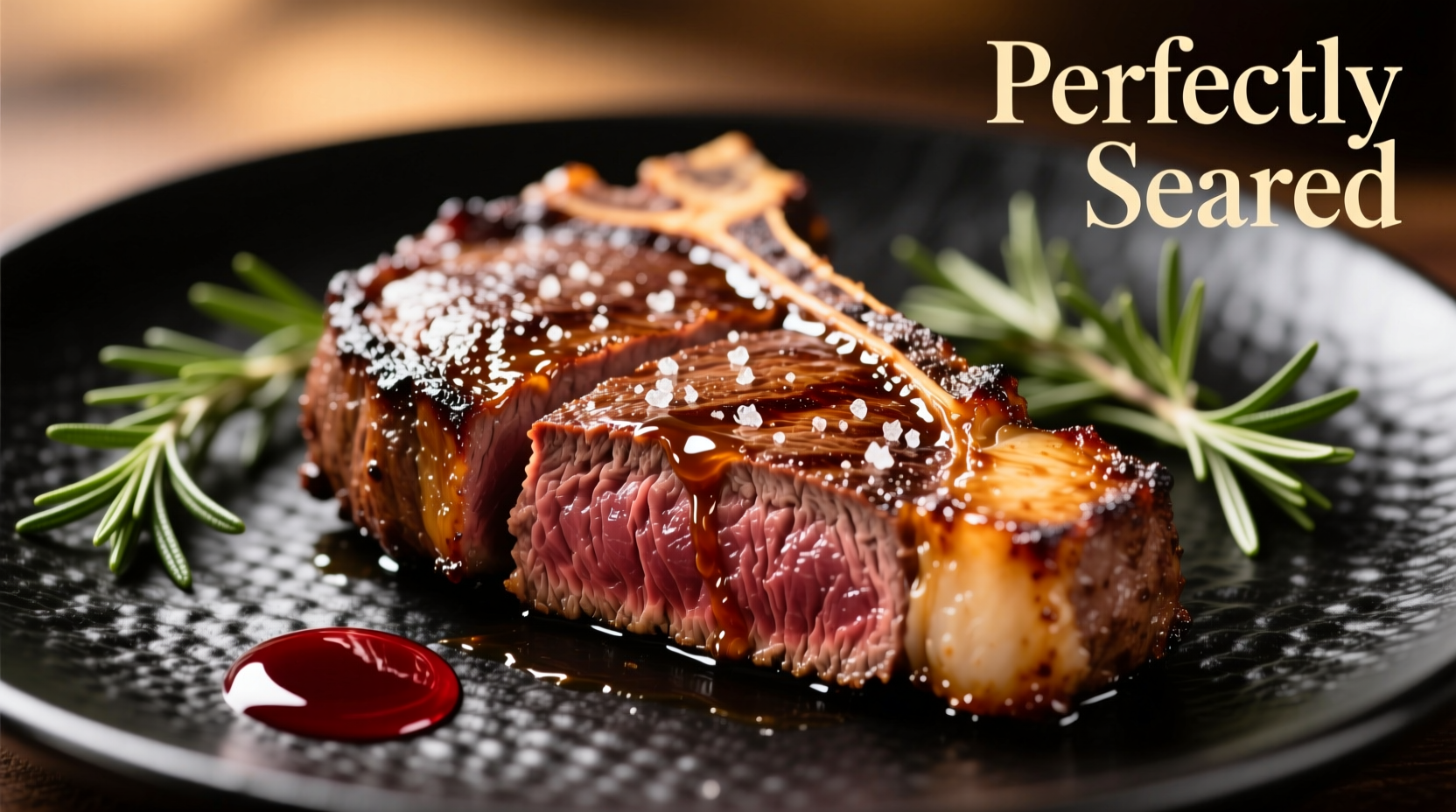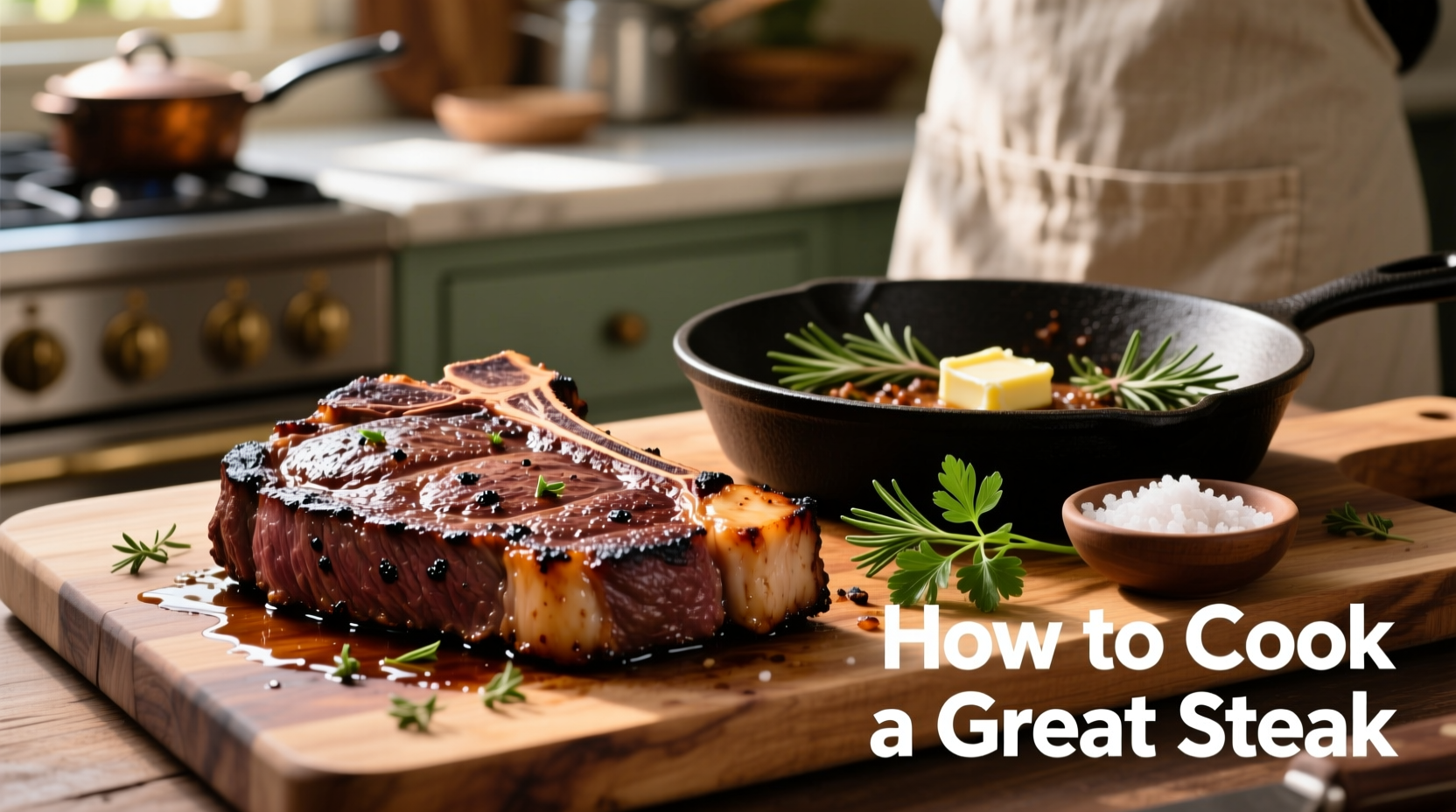Follow these essential steps to cook a perfect steak: select quality meat with proper marbling, bring to room temperature, season generously with coarse salt, sear at 400-450°F, monitor internal temperature (120°F for rare, 135°F for medium-rare), and rest for 5-10 minutes before slicing against the grain.
Master the Art of Steak Perfection: Your Complete Cooking Roadmap
Nothing compares to a perfectly cooked steak—crisp, caramelized exterior giving way to a tender, juicy interior. Whether you're using a cast-iron skillet, grill, or oven, the right technique transforms simple ingredients into an extraordinary meal. This guide delivers professional chef methods refined through decades of culinary practice, giving you everything needed to achieve restaurant-quality results at home.
Essential Tools for Steak Success
Before you begin, gather these kitchen essentials. Professional results require proper equipment:
- Heavy-bottomed cast-iron or carbon steel skillet (retains heat better than non-stick)
- Instant-read thermometer (critical for precision cooking)
- Thin metal spatula for flipping
- Wire cooling rack for resting
- Coarse salt and freshly ground pepper
According to the USDA Food Safety and Inspection Service, proper equipment significantly reduces food safety risks while improving cooking outcomes (USDA FSIS).
Selecting Your Steak: Quality Matters Most
The foundation of great steak begins at the butcher counter. Understanding grading systems helps you make informed choices:
| Grade | Marbling Level | Best Cooking Method | Price Range |
|---|---|---|---|
| Prime | Abundant marbling | High-heat searing | Premium |
| Choice | Moderate marbling | Versatile methods | Moderate |
| Select | Minimal marbling | Moist-heat techniques | Budget-friendly |
For home cooking, USDA Choice grade provides the best balance of quality and value. Look for bright red color, firm texture, and even marbling throughout the cut. Avoid steaks with dark spots or excessive liquid in the packaging.
Preparation: The Critical First Steps
Proper preparation separates good steak from exceptional steak. Follow this timeline for optimal results:
- Remove from refrigerator 45-60 minutes before cooking - brings steak to room temperature for even cooking
- Pat completely dry with paper towels - moisture prevents proper searing
- Season generously with coarse salt (1 tsp per pound) - enhances flavor and creates better crust
- Let rest 15-20 minutes after seasoning - allows salt to penetrate surface
Food science research from the Culinary Institute of America confirms that proper drying and salting significantly improves Maillard reaction development (CIA Research).

Cooking Methods: Finding Your Perfect Technique
Different cooking methods work best for specific situations. Understanding these context boundaries helps you choose the right approach:
Pan-Searing (Best for Indoor Cooking)
- Heat cast-iron skillet over medium-high until smoking point (400-450°F)
- Add high smoke-point oil (avocado or grapeseed)
- Place steak in pan, press gently for full contact
- Sear 3-4 minutes per side until deep brown crust forms
- Add butter, garlic, and herbs during last 2 minutes for basting
Reverse Sear (Best for Thick Cuts 1.5+ inches)
- Preheat oven to 275°F
- Place steak on wire rack over baking sheet
- Cook until internal temperature reaches 110-115°F (25-45 minutes)
- Finish with 60-90 second sear per side in hot skillet
Grilling (Best for Outdoor Cooking)
- Create two-zone fire (hot direct heat and cooler indirect area)
- Sear over direct heat 2-3 minutes per side
- Move to indirect heat until desired doneness
- Rotate 90° halfway through for attractive grill marks
Precision Temperature Guide: Doneness Levels
Forget guesswork—use an instant-read thermometer for perfect results every time:
| Doneness | Internal Temperature | Texture Description | Resting Time |
|---|---|---|---|
| Rare | 120-125°F | Cold red center, very soft | 5 minutes |
| Medium-Rare | 130-135°F | Warm red center, tender | 5-7 minutes |
| Medium | 140-145°F | Warm pink center, slightly firm | 7-8 minutes |
| Medium-Well | 150-155°F | Small amount of pink, firm | 8-10 minutes |
| Well-Done | 160°F+ | No pink, very firm | 10+ minutes |
Remember that temperature continues rising 5-10°F during resting (carryover cooking). Remove steak from heat 5°F below your target temperature.
Resting and Slicing: The Final Crucial Steps
Resting allows juices to redistribute throughout the steak. Cutting too soon releases precious juices onto your cutting board:
- Transfer steak to wire rack (not plate) to prevent steaming
- Cover loosely with foil
- Rest 5-10 minutes depending on thickness
- Slice against the grain at 45° angle for maximum tenderness
American Meat Science Association research shows that proper resting increases juice retention by up to 40% compared to immediate slicing (AMSA).
Common Steak Cooking Mistakes to Avoid
Even experienced cooks make these critical errors:
- Moving steak too soon - Wait until it releases naturally from the pan
- Overcrowding the pan - Cook one steak at a time for proper sear
- Using low-quality oil - Choose high smoke-point oils like avocado
- Skipping the rest period - Essential for juicy results
- Guessing doneness - Always use a thermometer for accuracy
Perfect Pairings: Enhancing Your Steak Experience
Complete your meal with these classic accompaniments that complement rather than compete with your steak:
- Simple compound butter (garlic-herb or blue cheese)
- Roasted vegetables with minimal seasoning
- Light starch like roasted potatoes or polenta
- Dry red wine that matches the steak's intensity
Remember that the steak should remain the star of the plate. Keep sides simple to highlight your perfectly cooked centerpiece.











 浙公网安备
33010002000092号
浙公网安备
33010002000092号 浙B2-20120091-4
浙B2-20120091-4